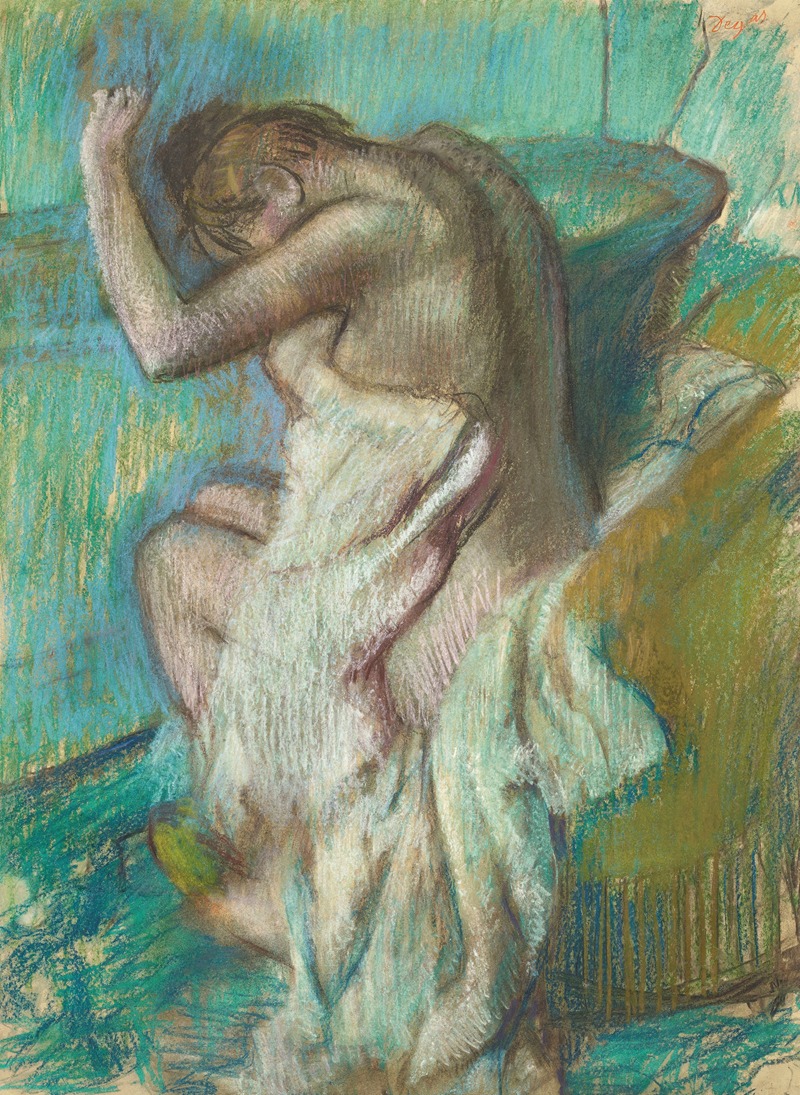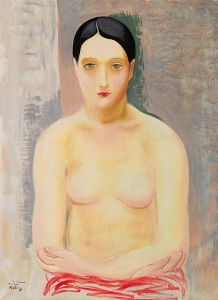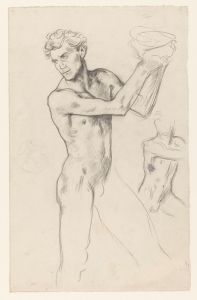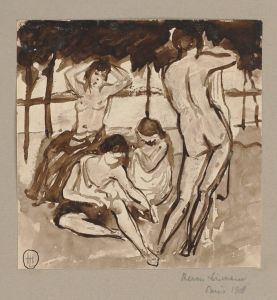
Femme s’essuyant
A hand-painted replica of Edgar Degas’s masterpiece Femme s’essuyant, meticulously crafted by professional artists to capture the true essence of the original. Each piece is created with museum-quality canvas and rare mineral pigments, carefully painted by experienced artists with delicate brushstrokes and rich, layered colors to perfectly recreate the texture of the original artwork. Unlike machine-printed reproductions, this hand-painted version brings the painting to life, infused with the artist’s emotions and skill in every stroke. Whether for personal collection or home decoration, it instantly elevates the artistic atmosphere of any space.
"Femme s’essuyant" is a pastel drawing created by the renowned French artist Edgar Degas. Degas, a prominent figure in the Impressionist movement, is celebrated for his innovative compositions and his exploration of modern life, particularly through his depictions of dancers, women at their toilette, and scenes of Parisian life. This particular work, "Femme s’essuyant," is part of Degas's series of works that focus on the intimate and private moments of women engaged in their daily routines.
The artwork depicts a woman in the act of drying herself after a bath, a subject that Degas explored extensively throughout his career. The piece is notable for its candid portrayal of a private moment, capturing the natural and unposed posture of the woman. Degas's approach to such subjects was groundbreaking at the time, as he sought to depict the unidealized and authentic aspects of human life, challenging the traditional representations of the female nude in art.
Degas employed pastel as his medium for "Femme s’essuyant," a choice that allowed him to achieve a rich texture and vibrant color palette. Pastel was a favored medium for Degas, particularly in his later years, as it enabled him to experiment with color and form in a way that was both immediate and expressive. The use of pastel in this work contributes to the softness and fluidity of the composition, enhancing the sense of movement and the tactile quality of the woman's skin.
The composition of "Femme s’essuyant" reflects Degas's interest in unconventional perspectives and cropping, a technique influenced by the advent of photography and Japanese prints, which were gaining popularity in Europe during the late 19th century. The woman's figure is positioned off-center, and the focus is on the action of drying, rather than on her identity or facial features. This focus on the body and its movement is a hallmark of Degas's work, emphasizing the physicality and immediacy of the moment.
Degas's portrayal of women in such intimate settings has been the subject of much discussion and analysis. Some critics view these works as a reflection of Degas's interest in capturing the realities of modern life, while others interpret them as a commentary on the voyeuristic nature of observing private moments. Regardless of interpretation, "Femme s’essuyant" remains an important example of Degas's ability to blend technical skill with a keen observation of human behavior.
The artwork is housed in various collections, with several versions and studies existing, as Degas often revisited themes and compositions throughout his career. "Femme s’essuyant" exemplifies Degas's mastery of pastel and his innovative approach to composition and subject matter, securing his legacy as one of the most influential artists of the Impressionist era.


















